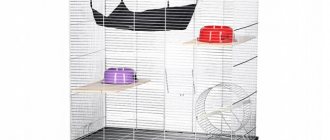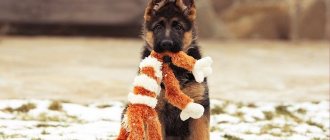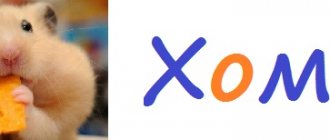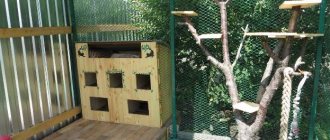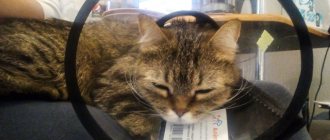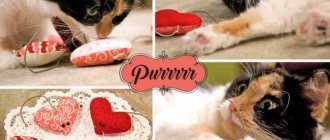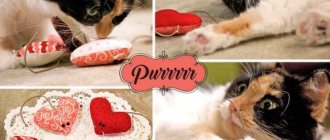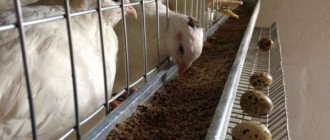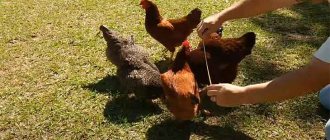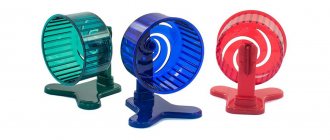- home
- Parrot
- Arrangement
05/11/2019 The parrot is one of the most popular pets. These birds have adapted well to life in captivity. A caring owner is able to turn a cage not into a place of confinement, but into a comfortable home, a cozy house.
However, the house will not become cozy if you do not place toys for parrots in it. They are needed in order to brighten up the bird’s leisure time, develop its mental qualities and simply satisfy the need for communication and games.
Why do you need entertainment for your poultry?
Buying toys for your feathered pet seems like a minor and optional activity, but it is not. There are several reasons to equip a cage with a play space:
- Don't let the bird get bored in the absence of its owner.
- Do not let the bird from idleness spoil the interior of the room.
- Relieve a newcomer from psychological discomfort and speed up his adaptation to a new place.
- Keep wild birds in good physical shape at home.
A parrot is a bird that needs company, communication, it loves to play pranks and have fun. Otherwise, the bird begins to get bored and develops some psychological problems that can lead to illness. For known reasons, owners cannot stay near the cage with their feathered pet around the clock.
The second reason is pranks. The budgerigar is a nimble, active bird capable of much. In just one evening outside the cage, he can tear off the wallpaper in the room, damage the wiring, climb into an outlet, or get tangled in the folds of curtains. The owners will not be able to monitor their pet every second. To prevent the wavy from being naughty in the room, they buy him toys.
The third reason is adaptation. As soon as the parrot gets into a new home, all the necessary conditions are created for it to quickly get used to the new environment.
It is important that at this time the bird not only eats and drinks enough, but also does not get bored. Bright toys will help dispel melancholy and get used to a new home
The fourth reason is obesity. Often, domestic parrots eat a lot and exercise little, which leads to health problems. Various swings and ladders will make your pet bird move more in a playful way. The parrot will not even understand that by jumping on ladders and playing with a ball, he burns off extra grams. Exercise toys are important for your budgie's health.
Important Tips
Having figured out how to play and communicate with a budgie, it is not enough to provide your pet with a variety of devices. Following these tips will help you care for your bird:
- It is better to purchase those toys that are intended specifically for “wavy children”;
- When making homemade toys, it is worth remembering that they must correspond to the size of the bird;
- a parrot needs variety, and therefore toys must be replaced periodically with others;
- the pet’s home should be as spacious as possible, and therefore you should not “clutter it up” with play equipment; it is better to make a play area;
- the safety of the pet when placing toys is paramount;
- play equipment must be washed and cleaned;
- broken items should be removed from the pet’s field of vision as quickly as possible.
When caring for your feathered friend, it is important to promote his physical and psychological comfort. Established contact will make the bird the owner’s best friend, with whom you can even have a heart-to-heart talk. Joint games will allow you to make friends and tame the bird so much that it will not accept anyone else as its owner.
Varieties
Pet stores offer a huge number of toys made from various materials and designed for wavy animals. They can be used inside or outside the cage and have different functions.
Some things are needed to sharpen the beak and nails, while others develop intelligence. There must be toys designed for the full physical development of the pet.
Before purchasing a finished product, it is important to make sure that there are no glue residues or small objects on the surfaces that the parrot could tear off and swallow.
For sharpening the beak
The beak of the wavy is covered on top with a horny layer, which is easily ground off.
To do this, the parrot must have constant access to special objects that are used to sharpen its beak. You can use special toys made of wood or plastic.
The basic rule to follow is the safety of the material used. Typically, such toys are represented by a dummy bird, wooden sticks attached to the wall of the cage, as well as perches with unusual protrusions.
Intelligent
Their purpose is to develop the mental abilities of the bird. They are represented by special educational puzzles, upon solving which the bird gains access to some kind of delicacy.
Usually labyrinths or special balls are used for these purposes, which are closed on several sides, but have recesses into which the wavy can insert its beak. With regular use of such toys, the pet becomes more intelligent, and this often has a positive effect on the speed of speech learning.
Do you buy toys for your parrot?
Not really
For physical development
Since pet parrots don't move much, they require special items to help them maintain optimal physical condition. For this purpose, special rings, perches, bungees and ladders are used.
But it is not recommended to overdo it with these elements, since otherwise the parrot simply will not have room for quiet rest and relaxation. You need to place purchased or made elements at different heights.
Interactive
They consist in the fact that the bird must perform certain actions in order to receive a certain delicacy. Sometimes such toys produce sounds when pressed, which arouses the parrot's interest.
Some birds do not understand what needs to be done with an interactive toy, so the human task is to show the principle of operation of the item.
Things to consider
Anyone can create a cage of optimal size on their own. To do this, you do not need to buy expensive tools or have specific work experience. In this case, the breeder independently decides what dimensions and other features the design will have.
If you plan to breed wavy birds, then it is advisable from the very beginning to make a large cage in which several pairs will be comfortable.
Requirements for a homemade design
Before starting work, it is recommended to study some of the requirements for it. They allow you to make a product in which parrots will feel safe and comfortable.
These requirements include:
- the dimensions of the structure depend on the number of birds that will live in the cage;
- The minimum requirement for one wavy is a cage with dimensions of 40x25x50 cm;
- if a couple is planning to live, a large structure is required;
- It is best to focus on a rectangular shape, since even with no experience it is quite easy to make basic products for it, and the cleaning process is also simplified;
- if a person has skills in working with different materials, then you can choose a cylinder shape that provides better visibility for the bird;
- first, a drawing is made according to which the main parts of the product are formed;
- inside the cage it is necessary to provide places for accessories, perches and other things the birds need;
- an optimal distance is left between the perches, allowing the bird to flap its wings without touching the main parts of the cage;
- for wavy animals, the distance between the rods of the cage should not exceed 1.5 cm, since if the holes are too large, the wavy animal can stick its head through and get stuck;
- the thickness of the cage rods depends on the size of the bird, so it is advisable that this parameter exceed 2 mm, otherwise even a wavy bird can chew through the wire;
- During operation, various sharp edges are formed, which must be properly concealed and hidden, otherwise they can cause significant harm not only to the pet, but also to humans.
Wavys happily gnaw on wooden parts, so if you plan to create perches from wood, then only hardwoods, which include oak or birch, are selected.
Selection of materials
Before starting work, it is recommended to make a drawing and also determine what materials the walls and ceiling, as well as the bottom of the cage, will be made of.
The floor is made solid, and it is also desirable to form a retractable part, represented by a tray, since such a device makes it easier to clean the product from dirt.
Only materials are selected that cannot harm the wavy. The standard choice is a mesh fabric and a fiberboard sheet, the thickness of which is 1.5 cm. A galvanized mesh is used to form the grid.
It is represented by a welded steel structure in which the wire has a thickness of 2 to 3 mm. Cells usually differ in size 10x25 mm. When choosing chipboard or plywood, it is taken into account that the thickness of the sheet should allow connecting parts of the structure using screws.
It is advisable to choose a sheet of chipboard with a thickness of 1 cm, and for a sliding tray choose plywood with a thickness of 0.5 cm. It is allowed to use used products obtained during the manufacture of various furniture.
To protect the room from the food that birds scatter while feeding, it is recommended to make a side at the bottom of the cage, its width starting from 10 cm. For this, inexpensive plastic is chosen, and it is desirable that it be transparent.
It is undesirable to make structures only from wood, because the material absorbs moisture and begins to deteriorate and rot over time, which can become dangerous for the parrot. Usually they resort to combined options.
How to make it yourself
You can make different types of toys yourself that you can play with. To do this, you do not need to use specialized tools or expensive materials. In just a few minutes you can get a product decorated with bells, ropes or beads.
The most popular are swings, which are made based on the size of the wavy.
To create them, follow these steps:
- a wooden branch for the perch is cut, and the length varies from 7 to 15 cm, but the individual size of the bird is taken into account;
- small cuts are made on both sides of the stick, which will allow the thread to be securely fastened;
- two jute threads are tied to the perch, which are inserted into pre-made cuts, and the length of the thread depends on the height of the cage;
- The finished swing is suspended inside the cage using a thread.
When choosing the diameter of the perch, it is taken into account that the bird should cover ¾ of it with lamps, and not completely.
In the video, one of the options for creating entertainment for wavy animals:
Materials for production
To make a swing, you just need to prepare a perch. It can be bought or made from a wooden twig, which is turned and sanded. It is fixed with a strong jute thread.
Popular articles Maslenitsa - poetry, prose, SMS
To obtain a beautiful design, it is advisable to prepare decorations, for example, multi-colored threads tied into a bundle, a bell or beads.
Tools
The following elements are required for operation:
- sanding paper for processing wooden perches;
- scissors for cutting threads and branches.
The procedure for creating a structure does not take more than 30 minutes.
Ladder of branches
Branches of fruit trees are suitable for this. Your pet will not only move around on it, but also sharpen its beak on natural elements, and not on plastic toys sold in stores, which may be too hard .
When choosing material for stairs, it is better to find several large blocks. Through holes are drilled at their ends to make it possible to hang the ladder using natural rope.
With good imagination, you can build a whole “town” from tree branches of different sizes, consisting of ladders and swings of different sizes. Its base is a rectangle. The structures are fastened with twine made from natural ingredients or wood glue.
The best original ideas
Below are the most popular homemade toys that any budgie will love.
Kinder surprise container
It is used as a base for storing buttons or beads. Several holes are made in the container, through which the contents cannot spill out. The plastic container is tightly closed and suspended from the ceiling of the cage. The pet will try to get the buttons through the holes.
Playground
Special stands for budgies have become very popular. They are a structure that can easily be moved to a convenient place outside the cage. For its construction, ropes, chains, wires and branches are chosen. The structure consists of several tiers connected to each other. A budgerigar climbs up and down the stairs and rides on a swing, which is decorated with various accessories. The play stand resembles a scaled-down model of a children's ropes course.
Dummy bird
You can make a fake budgie from cardboard or paper. However, this option will not last long. It is better to sew a bird from fabric, stuffing it with cotton wool. You can find many variations of parrot patterns on the Internet. They sew a toy from bright scraps. It's quite easy to do. In addition, the wavy will not notice minor flaws and will mistake the double for its own relative.
To teach your pet new games, you need to introduce them to them gradually, without causing fear.
It is important to praise and treat your pet for trying to approach an unknown object. After this he will no longer be sad
The colorful exotic birds are flocking creatures and cannot live alone. A lonely budgie at home often experiences psychological discomfort and lack of communication. When purchasing a pet, a caring owner takes into account all its needs: chooses a spacious cage, comfortable perches, and dishes. But he often forgets about entertainment for his little pet. For comfortable keeping, toys for budgies are necessary.
About creating playgrounds
The playground is a special entertainment complex. The necessary toys are combined here. The complex is installed in a cage or outside.
Such platforms and stands are good because they are created individually for each individual and are subject to modification. For example, play stands for budgies always contain a lot of noisy things, a stand for lovebirds contains a lot of “chews,” and for larger parrots there is a suitable number of stairs and perches.
To create a playground, you first need to draw a sketch of what you want to see. Then you need to decide on the materials. The materials chosen are environmentally friendly. The choice in favor of one material or another is made based on the author’s idea. If this or that structure cannot be put together from wood, you should turn to metal, etc.
After the above steps, the individual parts of the stand are already being manufactured and tightly fastened together.
Children's toys for a feathered pet
Children leave behind a lot of plastic toys. They are made of high-quality hypoallergenic materials and do not have small parts, so they are ideal for a feathered pet.
In addition, children's toys are bright enough to attract the bird's attention.
For a parrot, you can take the following children's toys:
- rattles;
- large beads and balls that the parrot is not able to swallow;
- teethers;
- badminton shuttlecock;
- bell;
- mirror.
All these devices are suspended from ropes in the cage. Large knots are made between the beads, which the bird loves to peck. Teethers are attached so that the bird can sit on them. She stretches her paws well on the soft, pimply surface.
Empty containers from Kinder Surprise or shoe covers are also used as toys. They are filled with large beads, and small holes are made on the side, through which the filler can be seen, but it is impossible to pull it out. The filled plastic eggs are then suspended from the ceiling of the cage. Parrots love to peck at beads that are visible in the holes, trying to get them out.
Making a suspension bridge
We will need a rail with a cross section of 15x15mm, which is left over from the ladder. We saw it in half and get a rail with a cross section of 7.5x15mm. The “home lathe” trick won’t work here, so you’ll have to use your hands. We chamfer the edges of the slats and round the corners to obtain a slatted oval cross-section. We mark 10cm long dies on the rail and cut them off. I got 4 dies from one rack, but I need 8-9. We repeat the process.
Now I have 9 dies and a desire to make holes (;-). I mark points for the holes at an equal distance from the edges (not very close), and drill the dies right through. A little trick - we put a piece of plywood under the part that we want to drill through (which is no longer available) and when drilling, we firmly press the part against it, then when the drill comes out on the other side, it will not tear out extra pieces of wood.
Now we have 8-9 ready-made dies for the bridge and they need to be fastened to each other; “Fisherman’s Cord” is best suited for this - the bird will not tear it in the first five seconds.
Where to place a bowl for food and water in a budgie cage
Most cages have two attached containers and a perch extending across the middle of the cage. You may want to hang additional bowls on the rack.
When purchasing new bowls, stainless steel will fully offset the additional cost in cleanliness convenience and durability. Plastic bowls become greasy; ceramic bowls crack and break.
For water there are two options:
- open bowl;
- water bottle;
An open bowl of water can collect food, dust or debris, while a water bottle risks getting caught in it. The best idea is to have both available at all times. When purchasing a water bottle, make sure it is securely attached to the inside. Water bottles that are supposed to be held in place by a loop tend to slip off.
Mirrors: pros and cons
For many years, a mirror in a budgie's cage was considered one of the classic and mandatory components. Mirrors for birds are presented in various designs - a perch with a mirror or a pendant, where the mirror is only one of the elements, and, of course, classic mirror toys. Now in parrot communities there are two opposing opinions - some believe that a mirror is a necessary accessory, others do not recommend placing it in a cage. Opponents of mirrors justify their position by the fact that a bird can mistake the reflection for a relative and move away from a person. Supporters give counterarguments like “my budgie has a mirror and is very sociable.” From our point of view, first of all, everything depends on the owner. If the mirror is the only fun in the cage, and the owner does not devote enough time to his pet, it is obvious that the result will be withdrawal. If the owner finds time for joint games and communication, the bird has many different toys, then the mirror will become another wonderful accessory.
DIY toys for parrots
When making devices for your pets to play with, you need to remember that they must be safe and bring maximum benefit to your pets.
Check out the most beautiful, expensive and large breeds of parrots.
Bells
The bird will be interested in such a toy as a bungee with a bell. We will need:
- Rope 5 mm thick.
- Metal bell.
- Beads.
- Twig for the perch.
Manufacturing:
- String beads onto the rope, alternating with knots.
- At the lower end it is good to fix the perch and attach the bell.
- Secure the upper end of the rope to the cage.
You will probably be interested in reading about what to do if a feathered pet is afraid of its owner and constantly screams.
Swing
For this entertainment you will need:
- Wire.
- Beads or buttons.
- Stick-perch (ballpoint pen body).
Step by step execution:
- We calculate the length of the wire as two sides of the triangle into which the parrot can easily fit, plus the length of the loop for fastening.
- The base of the swing is a stick in which you need to make two holes for fastening.
- String beads or buttons onto the wire and thread the ends into the holes of the perch. Secure at the bottom with bright beads.
- In the upper part, make a ring that is secured in the roof of the cage.
Ladder
The following materials are required for a floor spiral staircase:
- Plastic bottle 0.5 l.
- River or sea sand.
- Rods at least 5 mm thick with a pointed end.
- Nuts for weight.
- Bright wrapping paper.
Manufacturing process:
- Rinse the sand well and heat it in a frying pan.
- Cover the bottle with wrapping paper to attract the bird's attention.
- Place nuts on the bottom of the container to give it stability.
- Pour sand into the bottle and close the lid well.
- Cut holes in the bottle in a spiral of a size large enough to insert the rods without them turning or falling out.
- Insert prepared twigs into the slots.
Popular articles Piñata
Gnawing
The spiral staircase can be used as a chewing machine and as a vitamin simulator.
Read more about how to make a carrier and aviary for parrots with your own hands.
To make it you will need:
- Willow vine.
- Wire.
- A bowl of hot water.
Sequence of operations:
- Cut the vine to the same length, remove dirt.
- Place in a container with hot water to disinfect and make the branches flexible.
- Twist the pieces into rings and let them dry for 24 hours to fix the shape. Rings can be single or in the form of a garland.
- Secure it with wire to the roof of the cage.
Video: DIY parrot chew
This device provides triple benefit - it sharpens the beak, allows you to hang comfortably and saturates the body with vitamins.
Important! Toys from time to time must be washed to remove food debris and droppings, and also replaced with others so that the pet does not lose interest in games.
Rattles
Parrots love rustling toys.
For production we will need:
- Kinder surprise container.
- Peas or small beans.
- Hemp rope.
Step-by-step instruction:
- Make a hole at one end of the container.
- We stretch the rope through it. We make a large knot so that it is larger than the hole.
- Add the beans and close the container tightly.
- We hang the rattle from the cage using a rope.
You can make several holes in the container for a curious pet.
Willow gnaws
You can make very useful toys from willow twigs for parrots with your own hands by collecting raw materials somewhere outside the city on the banks of reservoirs. Before you begin, soak the willow branches in boiling water. By doing this, you will not only give the tree greater flexibility, but also protect your parrots from infections and unnecessary microbes.
- Weave balls from the branches and hang them with wire from the roof of the cage. The result was original toys and necessary chews. Birds not only sharpen their beaks on wood, but also replenish their supply of useful vitamins.
- You can go further and make an original swing from willow sticks, attaching them to a ball with metal chains, and hanging a bell to complete the feeling.
Homemade toys
The idea for a DIY toy often comes to the owner spontaneously, plus the parrot often actively helps with this. Therefore, sparkling water caps of various colors, various buttons, beads, ropes made of natural fibers (hemp, jute, sisal) and, of course, tree branches are used.
Photo: peredelka
We construct so-called “gnaws” from twigs and twigs. For this, shoots of willow or birch are used (if you find them not very flexible, then in addition to the usual treatment in the form of scalding with boiling water, keep the branches in hot water for a while). Next, tie the twig into a knot and begin to weave and wrap it.
The size of the ball depends on the type of parrot and your plans for it. You can weave a hoop and hang this ball in it, or a huge ball itself can act as a separate chewing toy. Use natural threads to secure your craft and hang it on a play stand or in a cage.
Photo: ara-komarik
Using jute threads and twigs cut to the same length, you can build a rope ladder or a hammock/hut.
Also, if you attach a stick to the end of the rope, you will get a kind of bungee swing, which will be popular with feathered tomboys.
Photo: toysew
Beads are made from wooden blocks, plastic caps are added to them, and a cone can be attached on top, which the birds will enjoy exploring.
Using a thick plastic jar, fill one third of it with grains; for more “explosiveness,” you can add beans and peas.
Do not forget that all toys must be designed for your type of parrot; what is good for a wavy parrot can be dangerous for a parrot. The beak of larger parrots is much stronger and they can be bitten, swallowed and injured by any small and fragile objects.
Photo: rebeccaturpeinen
Of course, one should not underestimate wavy birds and lovebirds; these are still rodents. Picking out a crack or chip on a toy is not difficult for them. Therefore, carefully check all objects that entertain the birds for damage and the safety of the material.
Parrots have great respect for swings, whether homemade or manufactured.
Photo: my
If there is a playground for the parrot, the owner’s imagination has room to run wild. You can often rearrange it, replacing and adding new toys to the set.
Photo: maya_exquisite
Most parrot species are very sociable and energetic by nature. Birds always have something to do and if you don't provide them with the tools to have fun, they will find them on their own, which may not suit you.
Toys for budgies are slightly different from other entertainment items designed for larger birds, such as nymphs, grays, noble parrots, amazons, macaws, and senegal parrots.
Swing
It is best to make toys for a parrot with your own hands together with children. If you have already mastered the previous option, you can try to make a beautiful swing. It's very simple.
You will need:
- wire;
- beads and buttons;
- bell;
- a small stick-perch of suitable diameter.
If you couldn’t find a stick, you can use a ballpoint pen without a cap and paste.
Measure the wire to create a triangle. Its height should be such that the parrot can fit freely there and there is still a little left for making a loop. Place a pen part or attach a stick at the base of the triangle - this is where the bird will sit. String multi-colored beads, buttons and other “beauty” onto the side parts. Swinging on the new swing, the bird will happily play with its beak. Now connect the side parts in the form of a triangle. Attach a bell or a large bright bead at the junction. Make a loop from the remaining free ends - this is where the swing will be attached to the ceiling of the cage.
What types of toys are there for parrots?
Entertainment for your favorite parrot does not have to be bought in a store. All kinds of entertainment gadgets can be made with your own hands, from scrap materials. Pets appreciate such gifts; they are often much safer and suit each bird individually.
Leisure items can be “classified” - sorted according to the functions they perform. Stand out:
Developmental
These include various puzzles, the solution of which leads to receiving a treat. They help the pet develop its mental abilities.
Parrots are naturally quite intelligent, and they must have a variety of items for “intellectual leisure.”
For sharpening the beak
The so-called “chews” are quite important objects in the cage. You can make a toy for a parrot from paper, wood or plastic. The material must be safe, because its particles will certainly end up in the bird’s stomach.
By gifting the bird with such a necessary thing, the owners of inquisitive pets can protect their interior items and furniture.
To maintain physical fitness
These include rings, ladders, bungees, even ordinary perches at different heights. Such toys are important for budgies, because these babies are among the most active.
Motivating to action
These include all sorts of “things” that untie and unravel. This also helps to develop the bird’s mental abilities and will serve as a kind of “exercise” for the mind.
Each category contains the most popular leisure and entertainment items.
The most popular among poultry has always been the bell. They are universal, suitable for both small and medium parrots and large birds
Popular articles Funny congratulations on March 8, 2022. Funny congratulations on March 8
It is only important to choose the right size bell
We use natural materials
It’s easy to make DIY toys for budgies from everything that grows in the area.
Natural components are the most environmentally friendly and safe material. First of all, pay attention to the conifer cones. Your pet will really like them
The cone can be chewed, disassembled into “spare parts” and simply driven around the cage. To make it more comfortable for the parrot, you can not just put a pine cone on the bottom of the cage, but fix it on the side wall or hang it from the ceiling using a wire. If you are letting your parrot out for a walk, make a garland of pine cones and hang it somewhere like a swing. Believe me, your feathered friend will appreciate it.
Ordinary branches of fruit trees are suitable as material for the next toy. Gather a small bunch of them and place it on the wall of the cage. The parrot will happily gnaw on them and fuss around in the “broom”. Such a bundle will not only be a toy - with its help the bird will clean and sharpen its beak.
What are toys for?
Games are the same essential part of caring for budgies as feeding, maintaining a favorable temperature, bathing, trimming claws, etc. Without toys, the full development of a bird at home is impossible. In addition, playing games together strengthens relationships. And if the owner is not around and the bird is sad, toys are a good way to get rid of the feeling of loneliness, at least for a while.
Toys have different purposes: some (ladders, swings) help the parrot to develop physically and strengthen the bird’s health, others (mosaic, ball) develop resourcefulness, those made of wood help to wear down the pet’s claws and beak.
To learn to understand your budgie, you need to pay attention to it. It is precisely joint games that contribute to achieving this goal, they unite, show what your feathered pet needs, what its characteristic features are, help train and develop obedience
It is impossible to constantly care for and entertain a feathered pet. Therefore, so that the bird can do something while you are not around, buy or make parrot games for it with your own hands.
Safety regulations
If the owner decides to make a toy for the parrot himself, he needs to take into account several important rules that will help ensure safe leisure time for the pet.
- Branches of pear, oak, bird cherry and poplar cannot be used to make toys. A poultry will definitely taste a new item, and the wood of the listed trees has a negative impact on health. An excellent solution would be to use branches of various fruit trees (except pear).
The branches must be boiled well before production. This will help get rid of harmful wood microbes and ordinary dirt.
- Metals like zinc, copper and brass should be avoided. They are poisonous and can cause huge health problems if ingested by a parrot.
When using metal fasteners, hooks, etc., you need to check whether the metals used are safe for the health of the bird.
- It is difficult to imagine a leisure item for birds that does not require threads to make. It is better to use threads made from flax, sesal, hemp, jute and cotton fibers. Over time, the threads will fray and need to be replaced with others or removed from the cage.
Why are frayed threads dangerous? Parrots are quite fidgety, and it is possible for a pet to get tangled in its claws. If you try to get out, you can get seriously injured.
- If store-bought toys are used, they must be disinfected. Disinfection can be carried out using special means, and if the material of the item allows it, you can boil it several times and then sprinkle it with chamomile decoction.
Using store-bought items is by no means a bad thing. It is only important to check whether the materials from which they are made are safe.
- If toys are installed on a special stand, they must be secured tightly. A pet parrot will not play on a stand on which something has fallen once. The design will have to be modified or completely replaced.
- All items necessary for the life of a bird need to be washed and disinfected from time to time, and leisure items are no exception. Dirt and dust can produce germs that can lead to illness. And anyway, who would enjoy sitting in a house with dirty furnishings? Parrots are known to be extremely clean birds.
Basics of Placing Toys in a Cage
- Sooner or later the parrot gets bored with any toy, so the best option is to alternate them with each other so that they remain interesting for the bird. After all, the new is the well-forgotten old.
- On foreign forums you can often find photographs where the entire cage is covered with toys, which greatly limits the free space. Such placement of accessories is undesirable. There should be enough free space in the cage so that the bird can make a full flap of its wings without hitting anything.
- Organic residues (feed, droppings, etc.) may accumulate on the accessories. Regular cleaning of accessories is mandatory to prevent mold growth. Actually, this applies not only to toys, but also to cages, feeders, perches and drinking bowls.
- There are no 100% safe toys. One toy may be safe for one bird but dangerous for another. Use common sense - if the parrot has destroyed an accessory and you see that it may pose a danger (for example, sharp edges have appeared as a result of the breakage) - remove it from the cage! They need to be placed in the cage in such a way that there are no traps where the bird can get stuck.
- Match the size of the toy to your pet. Some products for large parrots may also be interesting for budgies - for example, a huge pendant for a large bird will be interesting to a budgie as a large hanging playground. However, in most cases it is recommended to choose a product that matches the size of your pet.
For example, in the photo below you can see the same musical pendant in two sizes - small and large (there is also a 10 ruble coin in the picture so that you can compare the sizes).
Important information
There is a list of things that birds keep in mind when purchasing and making leisure items.
- Stock up on more than one variation of one toy or many other toys. They change from time to time. This is done so that the pet does not get tired of the entertainment.
- Take into account the size of the bird when selecting entertainment. A bell that is too large or a mirror that is too small will not be useful.
- Too many toys - a bad idea. The bird needs a lot of free space to fly and exercise. Crowding will cause stress.
- It is important to clean, wash and disinfect toys on time. Otherwise, infections cannot be avoided.
- Broken toys should be immediately removed from the cage - the bird may get hurt when it plays. If it is impossible to repair, the broken amusement is sent to the trash bin.
How to accustom a parrot to a toy?
Parrots are birds that are interested in many things. However, in order not to cause stress or negative feelings in your pet, you should accustom him to a new accessory, adhering to some rules:
- familiarizing your feathered pet with a new toy should be gradual. Let your pet first observe the accessory that is located outside the walls of his home. The owner can show the toy and play with it to arouse the pet’s interest and relieve fear of the new accessory.
- reward your feathered pet for trying to play with a new toy. Your parrot should hear positive reinforcement and receive a treat if he starts using a new toy.
- the owner should show his pet how to use the accessory. The parrot himself can come up with many new options for using the accessory, but he must see how the owner uses the toy and what he does with it. This will help your pet learn to play with a new object.
Ladder chain
It can be made using an old thick chain, into the link of which wooden sticks of different sizes are inserted . Each stick must fit tightly into the link to avoid falling out. You can attach it to the top of the cage using a hook made of wire.
The end of the stick and the hooks should not have anything sharp!
Using the ladder chain you made, your pet will climb and hang on it. You can add to such a toy a mirror from an old powder compact, in which a hole is drilled and attached to a thin wire. To protect against possible injuries, beads of different colors are used, strung on this wire.
Purchased toys
The simplest and most common toys for budgies are rattles and other devices that make various sounds.
The most popular bird toys that can be purchased at a pet store are:
- One or more small bells, collected in a bunch. They are hung in a cage, and when the bird pulls the rope, they make a quiet melodious sound, which the feathered pet really likes.
- Classic rattles and sound toys, which are built on the principle of interaction with the bird. In various devices, you need to press a button, a lever, or throw a ball into a basket to hear a sound or song. Over time, the bird learns to perform these simple actions in order to achieve what it wants.
- Multi-tiered and multi-layered toys with a large number of parts to develop the bird's paws and beak. The parrot can climb on them, study large bright elements, peck and tug at them.
- Sports equipment: balls, ladders, carts, strollers. The bird cannot play these games on its own; the owner’s help is needed here. The pet needs to be shown how to throw a ball into a basketball basket, how to move a stroller or cart.
- Mirrors of various sizes, built into colored toys that can be hung or placed on the floor of the cage. If the owner has enough time to communicate with his pet, then there is no need to buy a mirror.
- Swings, ropes, ladders are devices for maintaining physical fitness. With the help of these toys, the bird moves more, keeping its muscles toned. An excellent choice would be a bendable rope, which can be given any shape: the bird will definitely love it.
Entertainment equipment for a budgie is a necessary and important thing. They help maintain excellent physical shape, develop mental abilities, and are able to entertain the bird in the absence of company. In addition, toys, by distracting the motley bird and relieving it of boredom, help keep the owner’s property safe and sound.
Mirrors: pros and cons
For many years, a mirror in a budgie's cage was considered one of the classic and mandatory components. Mirrors for birds are presented in various designs - a perch with a mirror or a pendant, where the mirror is only one of the elements, and, of course, classic mirror toys.
Now in parrot communities there are two opposing opinions - some believe that a mirror is a necessary accessory, others do not recommend placing it in a cage.
Opponents of mirrors justify their position by the fact that a bird can mistake the reflection for a relative and move away from a person. Supporters give counterarguments like “my budgie has a mirror and is very sociable.”
From our point of view, first of all, everything depends on the owner. If the mirror is the only fun in the cage, and the owner does not devote enough time to his pet, it is obvious that the result will be withdrawal. If the owner finds time for joint games and communication, the bird has many different toys, then the mirror will become another wonderful accessory.
Can plants be play?
Some plants are useful not only for eating, but also for creating interesting toys. But such structures are quickly eaten, so only healthy and safe plants are chosen to create the toy.
Willow wreaths are often made by joining willow branches with strong wire . You can even leave leaves that are of interest to the birds. To decorate such a wreath, you can use small flowers, bells and beads.
Edible toys made from healthy greens are not only attractive, but also useful. But it is important to choose plants wisely, as some herbs are dangerous for parrots.
Training apparatus
For this bird fun you will need a small plastic bottle or paper towel tube and wooden sticks.
- Seal the bottom of the tube.
- Drill or punch side holes of such a diameter that the sticks fit tightly into them without falling out or twisting.
- Fill the container with washed and calcined river sand.
Artificial friend
Parrots are very sociable creatures. If you have only one bird, then she definitely needs an object with which she can “talk”. It can be a mask or a toy parrot, which is easy to find in any pet store. They can be made of various materials (plastic, wood, etc.) and have a variety of sizes. When purchasing a wooden “friend,” make sure that the parrot’s wood is not painted with varnish or any other similar product. If you take a plastic bird, check if there are any traces of glue left on the toy.
If you have certain skills in needlework, then you can sew such a toy yourself. This craft will be environmentally friendly and will definitely not harm your pet.
